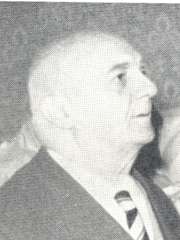Ezio Maria Gray
Ezio Maria Gray (born 9 October 1885 in Novara, Piedmont – died 8 February 1969 in Rome) was an Italian politician and journalist.

Early years
Gray, a staunch critic of socialism, was a founder member of the Italian Nationalist Association in 1910.[1] He dropped out of politics to serve in the Italian Army during the First World War and afterwards in Dalmatia.[1]
Fascism

On his return to Italy he became a supporter of fascism and set up the Novara fascio in 1920.[1] Gray was elected to parliament for the fascists in 1921 and was appointed to the National Directorate in 1924.[1] The following year he was appointed to the Grand Council of Fascism and in 1927 he took over the editorship of the fascist journal Il Pensiero di Benito Mussolini.[2] Away from his party duties he was a leading figure in the Società Dante Alighieri, President of the Ente Autonomo della Stampa and a businessman with a reputation for shady dealings.[2]
Gray served in the army during the Second World War before returning to civilian life as a radio broadcaster. His broadcasts were especially noted for their anti-Semitic content.[3] His position grew towards the end of the Italian fascists period and on 23 July 1943 he was appointed vice-president of the Chamber of Fasces and Corporations.[2] Gray continued to be an important figure in the Italian Social Republic and was appointed head of the Ente Italiano per le Audizioni Radiofoniche during the republic's brief existence.[4] Following the collapse of this regime he was sentenced to 20 years imprisonment for his leading role in the fascist government.[2]
Post-war
Soon after being sent to prison however Gray was amnestied and in 1947 he launched his own journal, La Rivolta Ideale, which pressed a neo-fascist line.[2] He then edited Il Nazionale, the paper of the Italian Social Movement and became a leading figure on the hard-line tendency, supporting Giorgio Almirante in his struggles with the more moderate Arturo Michelini.[2] In the MSI he became noted for his support for seeking an accommodation with political Catholicism, seeing this as a way to rehabilitate fascism, and to this end held a number of surreptitious meeting with Azione Cattolica leader Dr. Luigi Gedda.[5] Gray returned to parliament, serving the MSI as a deputy from 1953 to 1958 and in the Senate from 1963 to 1968.[2]
References
- Philip Rees, Biographical Dictionary of the Extreme Right Since 1890, 1990, p. 161
- Rees, Biographical Dictionary of the Extreme Right, p. 162
- Emilio Gentile, The Struggle for Modernity: Nationalism, Futurism, and Fascism, Greenwood Publishing Group, 2003, p. 174
- Luisa Quartermaine, Mussolini's Last Republic: Propaganda and Politics in the Italian Social Republic (R.S.I.) 1943-45, Intellect Books, 2000, p. 63
- Richard A. Webster, The Cross and the Fasces: Christian Democracy and Fascism in Italy, Stanford University Press, 1960, p. 213